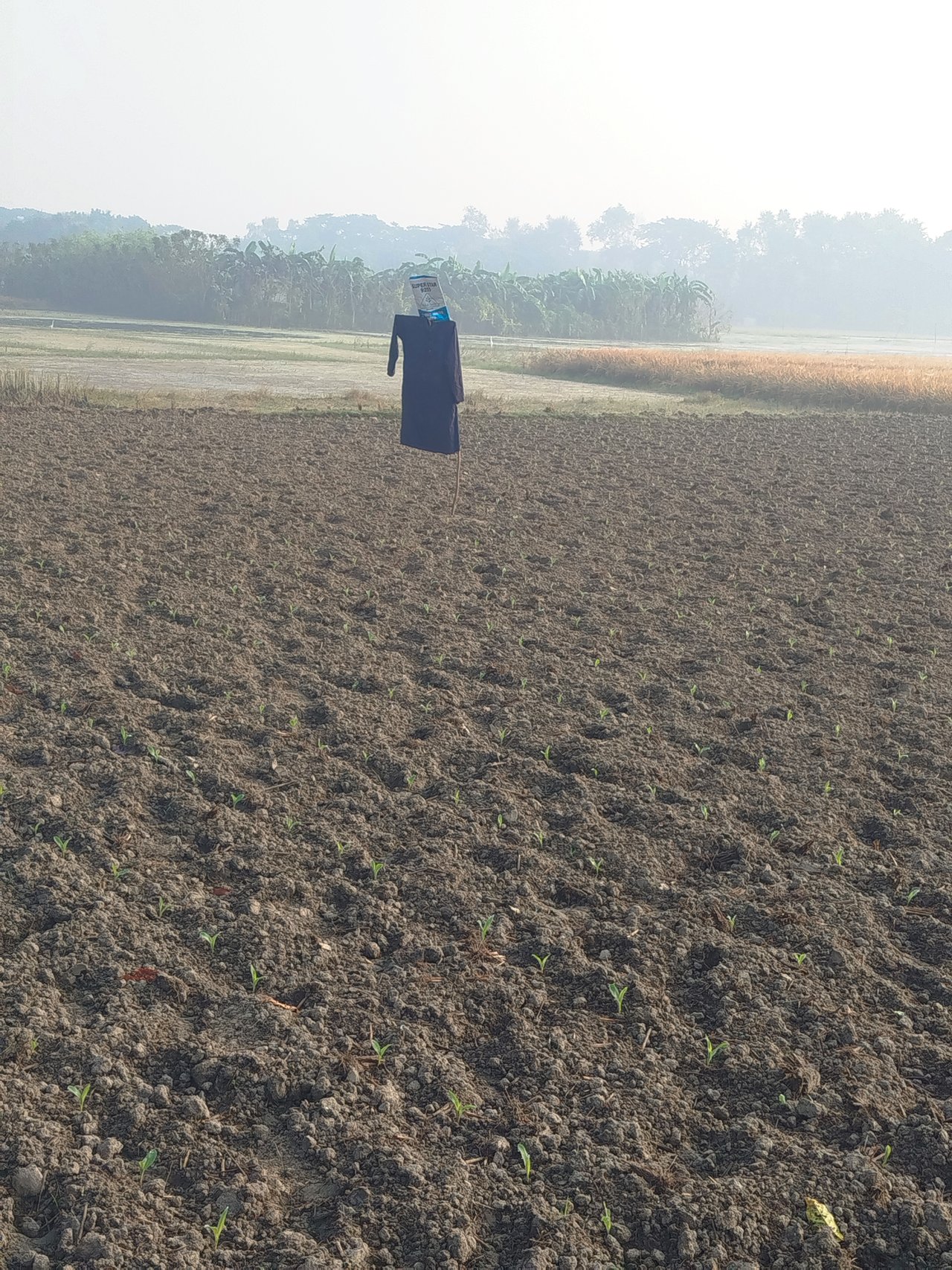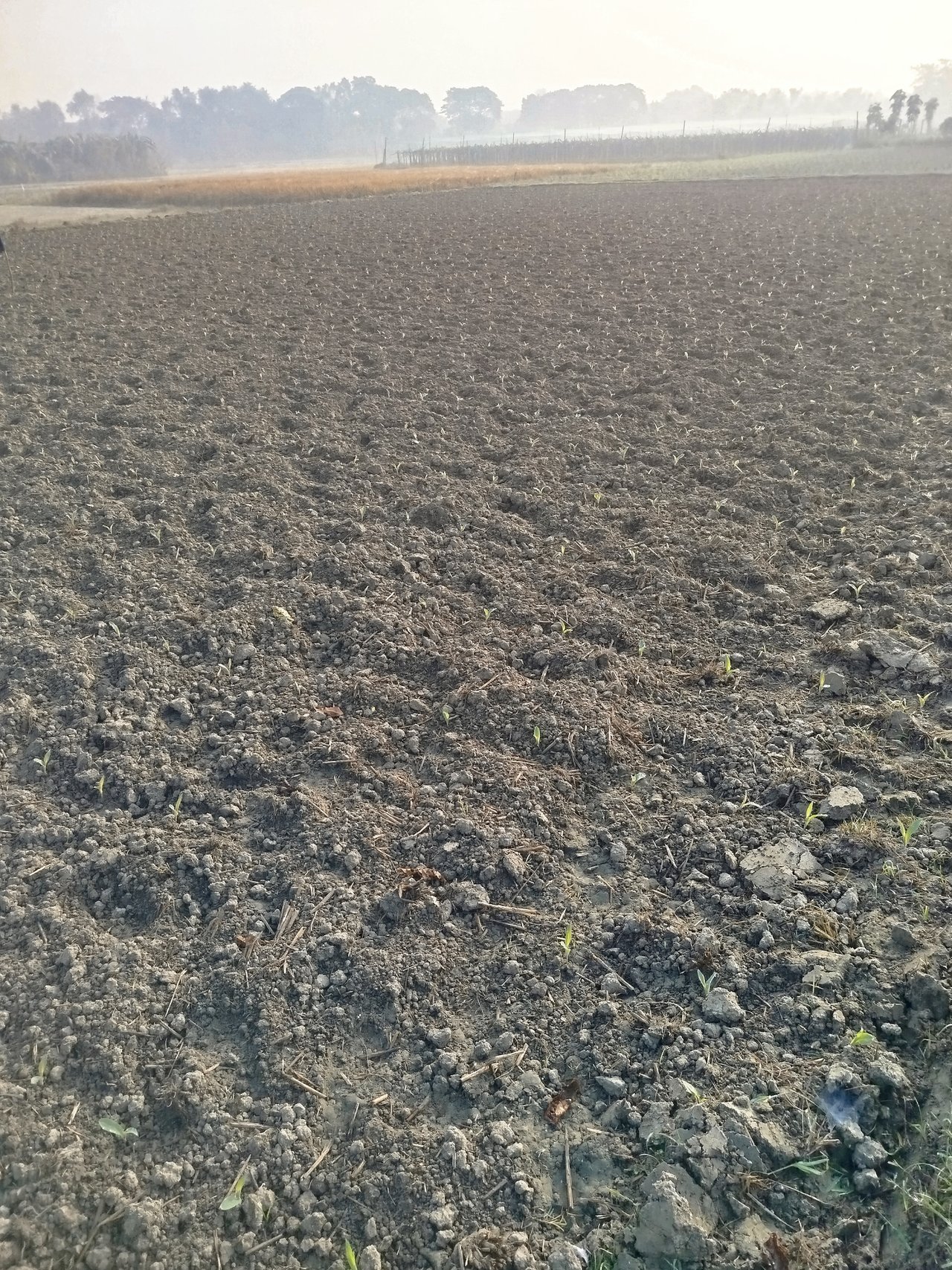The guard of the cultivated land. (21 November 2024)
1 comment
Assalamu alaikum
How are you all friends I hope you are all well I am also Alhamdulillah.
Today I came to you with a new blog.
I'm @romzan15 from #bangladesh

The purpose of placing a scarecrow in agricultural fields is primarily to scare away birds, especially crows and other crop-damaging birds. The sight of a scarecrow makes birds think that a human is present, causing them to avoid the area.
Benefits of Using a Scarecrow:
- Crop Protection: It prevents birds from landing on the field and damaging or eating the crops.
2.Cost-Effective: It is a low-cost method for protecting crops and reduces the need for chemical pesticides.
3.Eco-Friendly: It is a more environmentally friendly solution compared to artificial methods.
4.Creativity: Farmers sometimes design scarecrows in an aesthetic way to enhance the beauty of the field.
However, the effectiveness of a scarecrow can diminish over time as birds may eventually realize it is not a real human. To maintain its efficiency, it is essential to occasionally change its position or modify its design.


We ate corn.
To properly care for a maize (corn) field, several important steps must be followed. Below are the key aspects of maize field management:
- Soil Preparation
Prepare the land well by plowing and leveling it thoroughly before planting.
Maintain a soil pH level between 5.5 and 7.5. Apply lime if necessary.
2.Timely Seed Sowing
Select the planting time according to the local climate.
Sow seeds in rows, maintaining adequate spacing (around 20-25 cm between plants).
3.Fertilizer Application
Use both organic and chemical fertilizers (such as urea, TSP, potash) in the correct quantities.
Apply organic fertilizer and TSP as a basal dose during land preparation.
Split the application of urea into 2-3 doses during the plant’s growth stages.
4.Adequate Irrigation
Irrigation is crucial during dry seasons.
Ensure proper watering after seed sowing, when plants have 4-5 leaves, and during flowering and grain-setting stages.
5.Weed Management
Weeds compete for nutrients and reduce yields.
Regularly remove weeds from the field.
6 Pest and Disease Control
Monitor for harmful pests such as stem borers and leaf aphids.
Use insecticides as needed.
Diseases like leaf blight or fungal infections may occur; apply fungicides to control them.
7 Monitoring Plant Growth
Observe the plant’s growth, especially during the grain-setting stage.
Ensure proper nutrient supply to support healthy grain development.
8.Harvesting
Harvest the maize when the grains are firm and the husks are dry.
Timely harvesting ensures better yield and quality.
By following these steps carefully, you can ensure a healthy maize field and achieve optimal production.
For work I use:
mobile |
radmi note_13 |
photographer |
@romzan15 |
location |
Jhenaidah Bangladesh |
taking pictures |
in the field |
Friends, if you like it so far, please comment. Thank you
Allah hafez
Comments